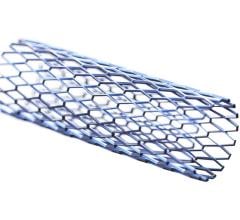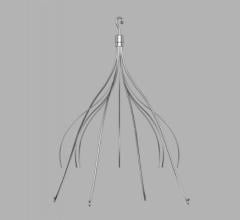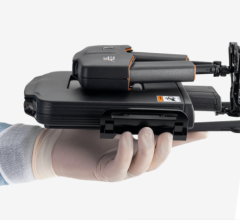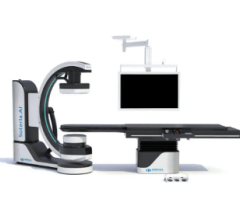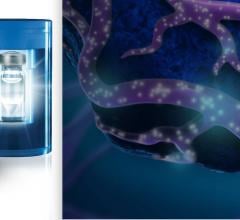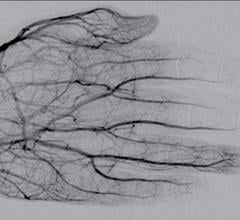Adjustable parameters on the ACIST® CVI® Contrast Delivery System include, flow rate, volume, pressure limit, rise time, and injection type.
In the field of medical imaging and procedures, having a versatile and efficient contrast delivery system can greatly enhance the quality of patient care. In this blog post, we will explore the various features and functions of the ACIST® CVi®, highlighting its range of abilities in terms of device capabilities, setup options, and use-case applications. We will discuss how these features can positively impact healthcare professionals, hospitals, and most importantly, patients.
1. Device Features and Functions
A truly versatile contrast delivery system begins with its features and functions. This includes the ability to adjust parameters such as pressure, flow, and other settings according to specific procedural requirements. Additionally, personalized use of the device is possible through hand controller calibration, allowing healthcare professionals to tailor the system to their preferences. The presence of both variable rate injections and fixed rate options further enhances flexibility during procedures.
The versatility of the ACIST CVi system may be even more valuable in a cardiac catheterization lab that caters to multiple specialties, as it allows for seamless transitions between procedures. For example, it enables endovascular specialists to perform selective catheter injections into the foot at a slow variable rate, while simultaneously facilitating aortic injections at a fixed rate in the same case. This level of adaptability enhances efficiency, saves time, and ensures optimal outcomes for patients undergoing diverse procedures within the lab.1
2. Versatility in Setup
The flexibility of the ACIST CVi extends to its physical setup options. The system can be mounted on a rail or a cart, providing adaptability to different procedural environments. Furthermore, the screen and control panel can be separated from the injector head, enabling healthcare professionals to position them in the most convenient and accessible manner. This feature promotes ease of use and enhances workflow efficiency for our lab.
In our cath lab, we have the advantage of modifying the position of the ACIST CVi system to accommodate the weight limits of the procedure table, which can sometimes be a challenge with older equipment. This adaptability ensures that we can optimize the setup for each procedure, overcoming many limitations imposed by table weight restrictions.
3. Accommodating Catheter Sizes and Waste Reduction
ACIST CVi supports the full range of catheter sizes, including 4Fr. A healthcare professional may find that this capability eliminates the need for a hand manifold and streamlines the procedural setup. The system incorporates a multi-use syringe, allowing for up to six procedures with improved workflow management and reduced contrast waste contributing to a more sustainable approach to patient care.1,2
In my practice, I have personally witnessed the tremendous impact of utilizing the ACIST CVi system while diagnosing infrapopliteal disease and defining pedal anatomy. The ability to employ this function alongside microcatheters has been a game-changer. This invaluable tool empowers me to provide the highest standard of care by ensuring accurate visualization and enabling informed decision-making. By leveraging the capabilities of the CVi, I have been able to obtain clear angiograms, which plays a crucial role in adhering to contrast management best practices and improving patient outcomes. The ACIST CVi system has undoubtedly allowed me to elevate the quality of my interventions, which I believe has led to enhanced patient satisfaction and optimized treatment results in my practice.
4. Enhanced Safety and Use-Case Versatility
The versatility of the ACIST CVi continues with its use across various procedure types. It can be employed in right heart, left heart, structural/TAVR, peripheral, and other interventions, making it an all-in-one solution for healthcare professionals. The system supports a wide range of injection types, from small puffs to large boluses, which may allow for compatibility with diverse patient needs throughout the abovementioned procedures.
Additionally, the inclusion of in-line automated hemodynamic pressure monitoring offers the option of dual pressure monitoring if required. This feature adds an extra layer of safety during procedures, allowing healthcare professionals to closely monitor patients' hemodynamic status.
In my clinical experience, the ACIST CVi system has proven to be an indispensable tool in performing ultra-low contrast complex coronary PCI procedures. Its advanced capabilities have allowed me to set precise limits and achieve optimal angiograms, even in patients with kidney disease. With CVi, I can carefully manage contrast usage while ensuring sufficient image quality for accurate visualization and decision-making during these intricate procedures. This level of control and adaptability is paramount in achieving better patient outcomes, particularly for those with compromised renal function.3,4
The ACIST CVi system has assisted me in enhancing the safety and effectiveness of my interventions, enabling me to provide the highest standard of care to my patients undergoing complex coronary interventions.
Conclusion
In today's cardiac cath labs, our primary goals center around practicing medicine in an efficient and effective manner, while simultaneously implementing cost-effective and contrast-reducing strategies. The ACIST CVi Contrast Delivery System has emerged as an invaluable tool that enables me to achieve these objectives seamlessly.
One of the key advantages of the ACIST CVi is its ability to facilitate quick room turnaround times, allowing for enhanced efficiency in patient care.1 The ease of setup and the system's ability to integrate smoothly into daily workflow further add to the appeal of the contrast delivery systems in a cardiac cath lab setting. Its user-friendly interface and intuitive design allow healthcare professionals to focus on delivering exceptional patient care rather than grappling with technical complexities
This enhanced efficiency also allows me to accommodate multiple types of procedures; whether it is coronary interventions, carotid procedures, peripheral interventions, endovascular aneurysm repair (EVAR), transcatheter aortic valve replacement (TAVR), or interventional radiology (IR) interventions, the system seamlessly adapts to diverse procedural requirements. For me, this eliminates the need for multiple setups and streamlines the workflow, enhancing productivity and patient care.
Additionally, the system offers the advantage of reducing contrast usage per case, which not only mitigates the risk of contrast-induced nephropathy (particularly in patients with pre-existing renal conditions) but also contributes to cost-effectiveness.2,3,4
Ultimately, ACIST’s automated contrast delivery system exemplifies the true essence of versatility in a modern medical device. Its ability to adapt to individual needs, optimize workflow efficiency, promote patient safety, and provide economic value makes it an indispensable asset in any cardiac cath lab.1,2,3,4,5,6 By accommodating catheter sizes, reducing contrast waste, and catering to a wide range of procedure types, I believe the ACIST CVi significantly enhances the quality of care provided, ultimately advancing the landscape of modern medical procedures.2 Embracing such versatile technology marks a significant stride toward achieving exceptional patient outcomes and driving positive advancements in healthcare.
References
- Lehmann C, Hotaling M. Saving time, saving money: a time and motion study with contrast management systems. J Invasive Cardiol. 2005;17(2):118-121;quiz 122.
- Minsinger KD, Kassis HM, Block CA. Meta-analysis of the effect of automated contrast injection devices versus manual injection and contrast volume on risk of contrast-induced nephropathy. Am J Cardiol. 2014;113(1):49-53.
- Call J, Sacrinty M, Applegate R, et al. Automated contrast injection in contemporary practice during cardiac catheterization and PCI: effects on contrast-induced nephropathy. J Invasive Cardiol. 2006;18(10):469-474.
- Amin A, Sharpiro R, Novak E, et al. Costs of contrast induced acute kidney injury. Circulation: Cardiovascular Quality and Outcomes. 2018;6(suppl 1):A316.
- Khoukaz S, Kern M, Bitar S, et al. Coronary angiography using 4 Fr catheters with Acisted power injection. Catheterization and Cardiovascular Interventions. 2001;52:393-398.
- Polimeni A, Passafaro F, De Rosa S, et al. Clinical and procedural outcomes of 5-French versus 6-French sheaths in transradial coronary interventions. Medicine (Baltimore). 2015;94(52):e2170.
IMPORTANT INFORMATION:
This article has been developed in conjunction with ACIST Medical Systems, Inc. (“ACIST”), who has compensated Dr. Krishna for writing this blog. Opinions expressed in this blog are not necessarily those of ACIST and reflect the personal and professional opinions of Dr. Krishna.
The author’s experience and opinions regarding the use of ACIST products may not be interpreted or relied upon to support clinical claims or product comparison claims regarding ACIST and competitive devices. Individual experiences may vary.
ACIST Medical Systems, Inc. (“ACIST”) does not promote or encourage the use of its devices beyond their approved indications for use. The experiences discussed do not necessarily represent or predict clinical outcomes in other experiences, since individual results may vary.



 January 09, 2024
January 09, 2024 
